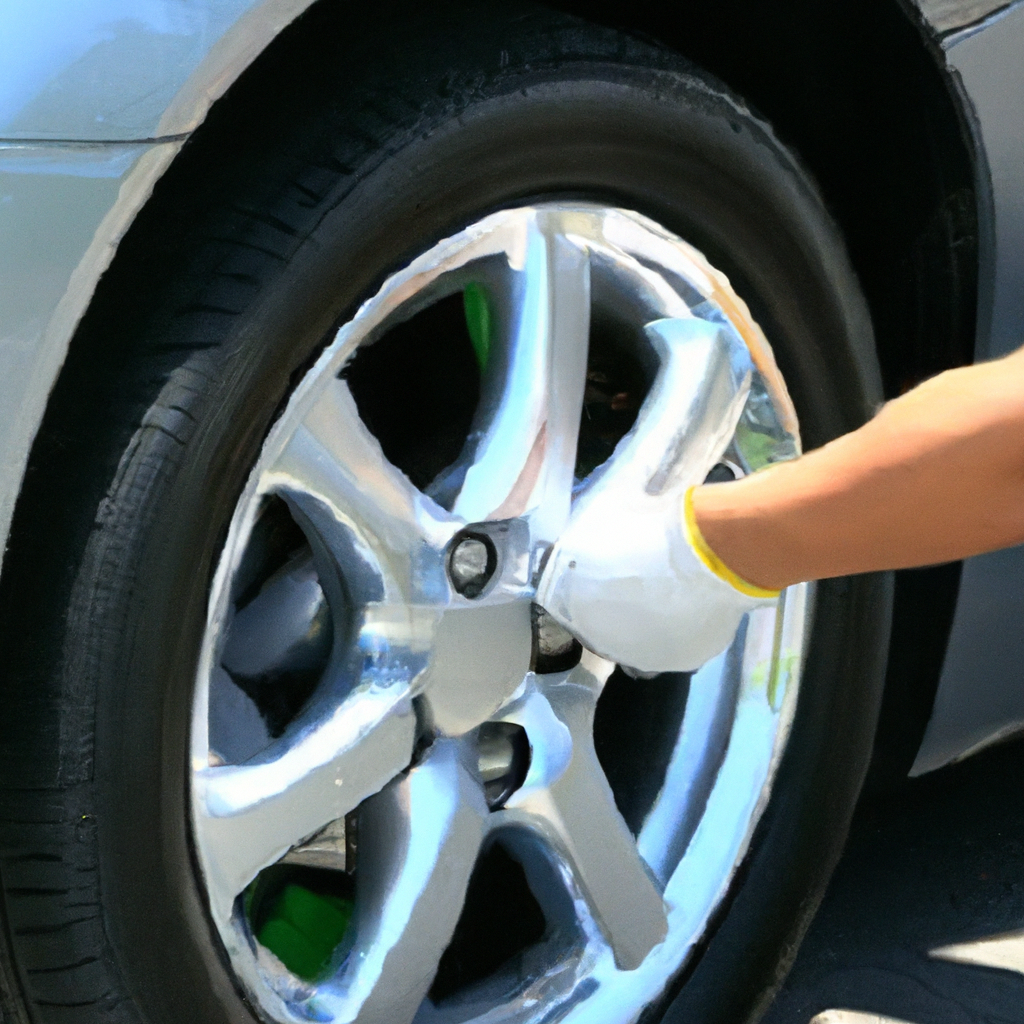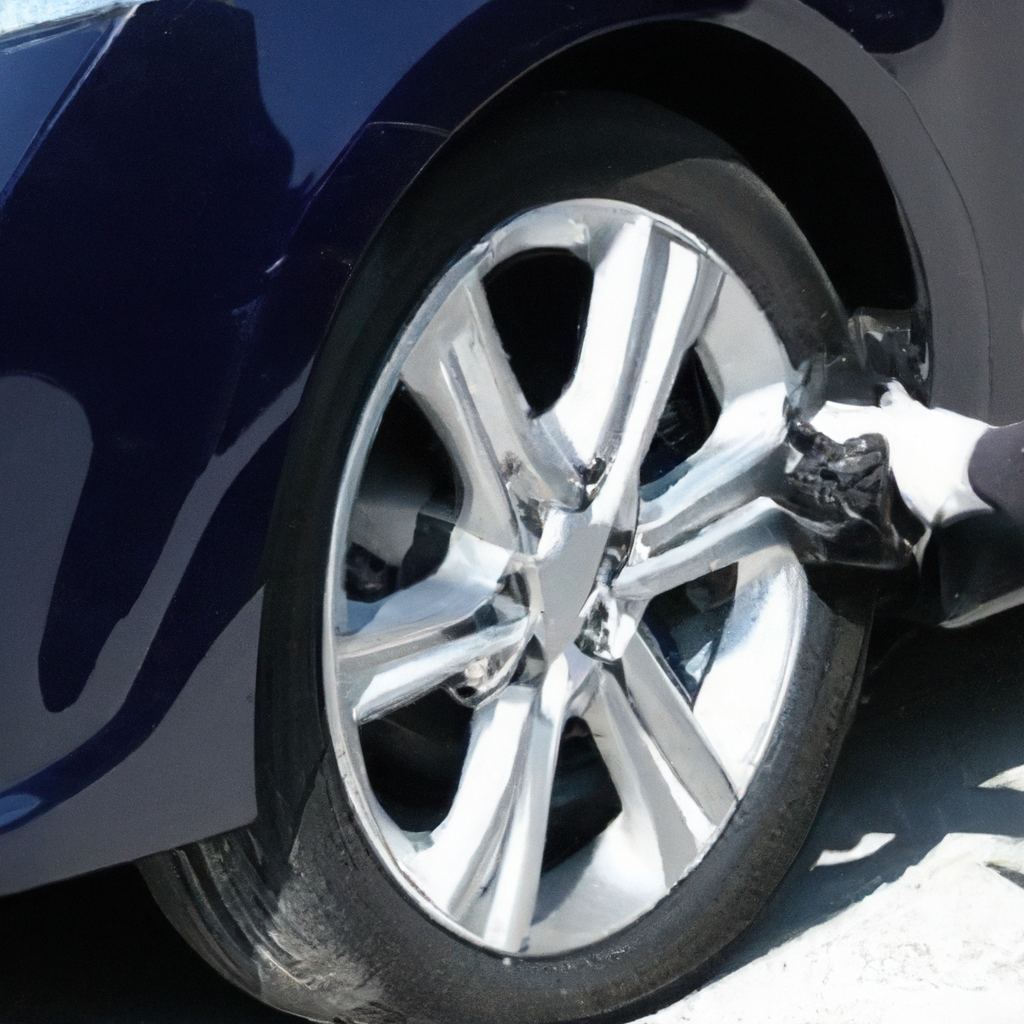If you want your wheels to always look sleek and shiny, then understanding the recommended frequency for waxing them is key. Regular waxing not only protects your wheels from dirt, grime, and other harmful elements, but also provides them with a beautiful and long-lasting finish. So, how often should you wax your wheels? Let’s find out.

Frequency of Waxing Wheels
What is wheel waxing?
Wheel waxing is the process of applying a protective layer of wax on the surface of your car’s wheels. This can help to protect the wheels from various types of damage, such as brake dust, corrosion, and rust. Wheel waxing not only keeps your wheels looking shiny and clean but also prolongs their lifespan.
Why is waxing wheels important?
Waxing wheels is important because it helps to maintain the appearance and condition of your car’s wheels. Wheels are exposed to various elements, including dirt, grime, brake dust, and harsh weather conditions. Without proper protection, these elements can have a negative impact on the wheels, causing them to deteriorate over time. Waxing provides a protective barrier that prevents these elements from damaging the wheels and helps to keep them in optimal condition.
How often should you wax your wheels?
The frequency of waxing your wheels depends on various factors, including the type of wheels, driving conditions, and personal preference. As a general guideline, it is recommended to wax your wheels every three to four months. However, if you live in an area with harsh weather conditions or frequently drive on unpaved roads, you may need to wax your wheels more often.
Factors affecting the frequency of waxing wheels
Several factors can affect how often you should wax your wheels:
-
Driving conditions: If you frequently drive in areas with a lot of dirt, dust, or road salt, you may need to wax your wheels more often.
-
Climate: Extreme temperatures, humidity, and exposure to sunlight can affect the condition of your wheels. In hot and sunny climates, the wax may need to be reapplied more frequently.
-
Type of wheels: Different types of wheels have varying levels of resistance to corrosion and damage. If you have aluminum or chrome wheels, they may require more regular waxing compared to steel wheels.
-
Personal preference: Some car enthusiasts prefer to wax their wheels more frequently to maintain a pristine appearance. If you take great pride in the look of your car, you may choose to wax your wheels more often.
How to Determine When to Wax Wheels
Visual inspection of wheels
One way to determine if your wheels need waxing is by visually inspecting them. Look for any signs of oxidation, corrosion, or brake dust buildup. If your wheels appear dull or have a rough texture, it may be time to wax them. Additionally, if you notice any water spots or stains that are difficult to remove, waxing can help to prevent their formation.
Check for water beading
After washing your car, observe how water behaves on the surface of your wheels. If the water beads up and forms droplets that roll off easily, it indicates that the wax is still effective. However, if the water spreads out in a thin layer or forms flat spots, it may be a sign that the wax has worn off and needs to be reapplied.
Exposure to harsh conditions
If your car is frequently exposed to extreme weather conditions, such as heavy rain, snow, or salted roads, it is advisable to wax your wheels more often. The protective layer of wax acts as a barrier against these harsh elements, preventing them from causing damage to your wheels.
Duration between waxing sessions
Keep track of the time since your last waxing session. If it has been more than three to four months, it is likely time to wax your wheels again. However, it is important to consider other factors as well, such as the condition of your wheels and the driving conditions you have experienced during that time.
Benefits of Regular Waxing
Protection against brake dust
One of the main benefits of regular wheel waxing is its ability to protect against brake dust buildup. Brake dust is a combination of fine particles generated by the friction between the brake pads and the rotors. Over time, this dust can accumulate on the wheels, making them look dirty and unattractive. Waxing creates a barrier that prevents brake dust from adhering to the wheel surface, making it easier to clean.
Preventing corrosion and rust
Wheels are constantly exposed to moisture, road salt, and other corrosive substances. Without proper protection, this can lead to corrosion and rust, which can weaken the structural integrity of the wheels. Waxing provides a protective layer that acts as a barrier against these corrosive elements, preventing them from causing damage to the wheels.
Enhancing wheel appearance
Regular waxing can significantly enhance the appearance of your wheels. The wax creates a glossy finish that makes the wheels look shiny and new. It adds depth and richness to the color of the wheels, making them stand out. Waxing also smoothens the surface of the wheels, reducing the appearance of minor scratches or imperfections.
Methods of Waxing Wheels
Hand waxing
Hand waxing involves applying wax to the wheels using a soft cloth or applicator pad. This method allows for more control and precision, ensuring that the wax is evenly applied to the entire surface of the wheels. It may require more effort and time compared to other methods but can provide excellent results.
Spray-on wheel wax
Spray-on wheel wax is a convenient and quick method to wax your wheels. It involves spraying the wax onto the surface of the wheels and then spreading it using a cloth or brush. This method is suitable for those who are short on time or prefer an effortless application process.
Wheel waxing kits
Wheel waxing kits often include all the necessary products and tools required for the waxing process. These kits typically contain wheel-specific wax, applicators, and a wheel brush or cloth. They are designed to provide a comprehensive solution for waxing your wheels, making it easier and more convenient.

Steps to Wax Wheels
Prepare the wheels
Before applying wax, it is essential to ensure that the wheels are clean and free from dirt, grime, and brake dust. Use a wheel cleaner and a soft brush to remove any contaminants. Rinse the wheels thoroughly and dry them completely before proceeding with the waxing process.
Apply wax to the wheels
For hand waxing, apply a small amount of wax to a soft cloth or applicator pad. Start by working on one section of the wheel at a time, applying the wax in a circular motion. Make sure to cover the entire surface of the wheel, including the spokes and rims. For spray-on wax, follow the instructions on the product label and apply a light, even coat of wax to the wheels.
Buff the wheels
After applying the wax, allow it to dry according to the product instructions. Once dry, use a clean, soft cloth to buff the wheels, removing any excess wax and creating a smooth, glossy finish. Buffing helps to further enhance the appearance of the wheels and ensure even coverage.
Tips for Waxing Wheels
Clean the wheels thoroughly before waxing
Before applying wax, it is crucial to clean the wheels properly. Use a dedicated wheel cleaner to remove any dirt, brake dust, or grime. This ensures that the wax adheres well to the wheel surface and provides maximum protection.
Use a dedicated wheel wax product
Using a specifically formulated wheel wax product is recommended to ensure optimal protection and longevity. Wheel waxes are designed to withstand the harsh conditions that wheels are exposed to and provide the necessary protection against brake dust and corrosion.
Avoid waxing brake components
When waxing your wheels, take care to avoid applying wax to brake components such as rotors, calipers, and brake pads. The wax can interfere with the braking performance and potentially lead to safety issues. Focus on applying wax to the outer surface of the wheels only.
Apply multiple layers of wax
For enhanced protection and a deeper shine, consider applying multiple layers of wax. Allow each layer to dry completely before applying the next one. This will provide a more durable and long-lasting protective barrier on your wheels.

Common Mistakes to Avoid
Applying too much wax
Using excessive amounts of wax can lead to a messy application and waste product. It can also make the buffing process more difficult. Follow the product instructions and apply a thin, even layer of wax to avoid these issues.
Neglecting regular cleaning
Waxing alone is not enough to maintain the appearance and condition of your wheels. Regular cleaning is essential to remove dirt, brake dust, and other contaminants that can accumulate on the wheels. Neglecting this step can compromise the effectiveness of the wax and lead to premature damage.
Using abrasive materials
When cleaning or applying wax to your wheels, avoid using abrasive materials or harsh cleaners. These can scratch or damage the wheel surface, negating the benefits of waxing.
Neglecting other maintenance tasks
While waxing your wheels is important, it should not be the only maintenance task you perform. Regular tire maintenance, such as checking the air pressure and rotating the tires, is crucial for the overall health and performance of your car.
Professional Wheel Waxing Services
Benefits of professional wheel waxing
Professional wheel waxing services offer several advantages. Firstly, professionals have the expertise to apply the wax correctly, ensuring maximum coverage and protection. They also have access to specialized tools and high-quality wheel wax products. Professional waxing can provide a more durable and long-lasting finish compared to DIY methods.
Frequency of professional waxing
The frequency of professional wheel waxing depends on the condition of your wheels and your driving habits. In general, it is recommended to have your wheels professionally waxed every six months to a year. However, it is best to consult with a reputable detailing service to determine the ideal frequency for your specific circumstances.

Conclusion
Regularly waxing your car’s wheels is a simple yet effective way to protect and enhance their appearance. By following the recommended frequency of waxing and taking into consideration the various factors that can affect the need for waxing, you can ensure that your wheels remain in optimal condition for years to come. Whether you choose to wax your wheels by hand, use a spray-on wax, or seek professional services, the benefits of waxing are undeniable. So, don’t forget to give your wheels the attention they deserve and enjoy the benefits of shiny, protected wheels that enhance the overall aesthetic appeal of your car.

